The Regional Comprehensive Economic Partnership (RCEP) was signed on November 15, marking the formal launch ofthe world’s largest free trade zone (FTZ) after eight years of negotiations.
RCEP
has the largest participating population in the world, the most
diverse membership, and the greatest development potential. How
significant is the signing of RCEP for the region, the world, and
China?
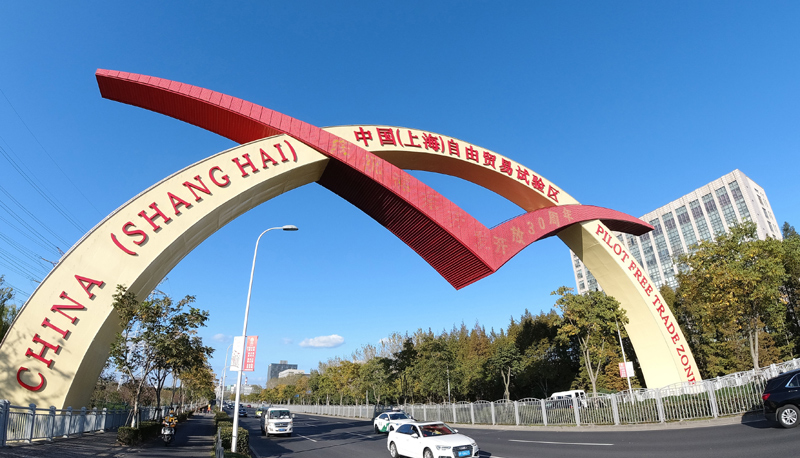
China (Shanghai) Pilot Free Trade Zone, photo taken on November 11 by Fang Zhe, reporter of Xinhua News Agency
A
victory for multilateralism and free trade
A
total of 15 member states signed RCEP, including ten ASEAN members
along with China, Japan, the Republic of Korea (ROK), Australia, and
New Zealand, covering a market of 2.27 billion people, GDP
USD 26 trillion, export USD 5.2 trillion, accounting for around 30%
of the world respectively. The
establishment of RCEP would create an integrated super-large market
with around one third of the global economy.
Initiated
by ASEAN in 2012, RCEP went through 31 rounds of negotiations over
the last 8 years. Since the beginning of this year in particular,
despite daunting challenges posed by the pandemic, RCEP members fully
concluded the market access negotiations, completed legal scrubbing
for the over 14000-page text, and eventually signed the Agreement at
the Summit as scheduled. This is the most significant outcome of East
Asian economic integration in the last two decades.
The
signing of the pact shows that all members are committed to cutting
down tariffs, opening up markets and reducing barriers of standards.
Some ROK media predicted that after RCEP takes effect, the tariffs on
auto parts exported by ROK to Indonesia will be reduced from the
current 40% to zero.
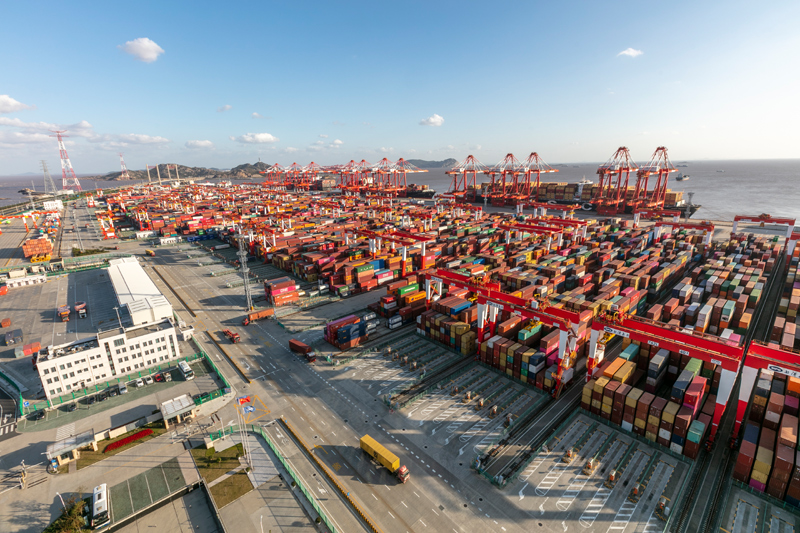
Container
terminal at Shanghai Yangshan Port, photo taken on November 3 by Wang
Xiang, reporter of Xinhua News Agency
Ruan
Zongze, Executive Vice President of China Institute of International
Studies, described the signing of the agreement as "crucial and
timely". He noted, against the special background characterized by
rampaging pandemic, serious economic decline worldwide, shriveling
international trade and investment, and rising protectionism and
unilateralism, that the RCEP agreement represents a victory for
multilateralism over unilateralism and free trade over protectionism
and will strongly boost all parties' confidence in economic growth.
Analysts
indicated that RCEP encompasses major countries in East Asia and thus
can inject impetus into regional and global economic growth. A
world-renowned think tank estimated that RCEP will boost the member
states' export, outbound investment stock and GDP to 10.4%, 2.6%
and 1.8% above the baseline by 2025.
The
world is undergoing profound changes unseen in a century, and Asia
Pacific is playing a vital role in world economic development. The
signing of RCEP has paved the way for the Free Trade Area of the
Asia-Pacific (FTAAP) and is expected to further elevate the position
of Asia Pacific in global development landscape, said Ruan Zongze.
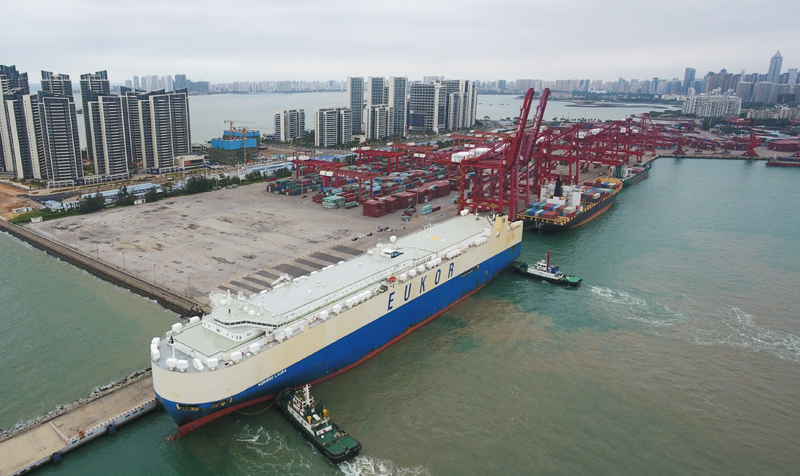
Ro/Ro Cargo Ship Laura, the first automobile-carrying foreign trade ship since the policy of China (Hainan) pilot FTZ is implemented, is sailing into the Xiuying Port in Haikou. (Photo taken on February 16 with UAV by Yang Guanyu, reporter of Xinhua News Agency)
High-quality
and inclusive development
The
Agreement is comprised of Preamble, 20 Chapters (including Trade
in Goods, Rules of Origin, Customs Procedures and Trade Facilitation,
Trade Remedies, and Trade in Services),
and four Market Access Annexes.
What
are the features of RCEP? It is a modern, comprehensive, high-quality
high-quality large regional free trade agreement that delivers mutual
benefits, said Wang Shouwen, Vice Minister of Commerce and Deputy
Representative of International Trade Negotiations.
RCEP integrates trade and economic rules within the region. It brings together multiple ASEAN's "10+1" FTAs with China, Japan, the ROK, Australia and New Zealand and existing free trade partnerships among the latter five countries.
Yu
Miaojie, Deputy Dean of the National School of Development, Peking
University, said that if all countries sign trade agreements in
pairs, the different, intertwined rules will lead to the spaghetti
bowl effect. Uniform rules can largely reduce the operation cost and
uncertainties.
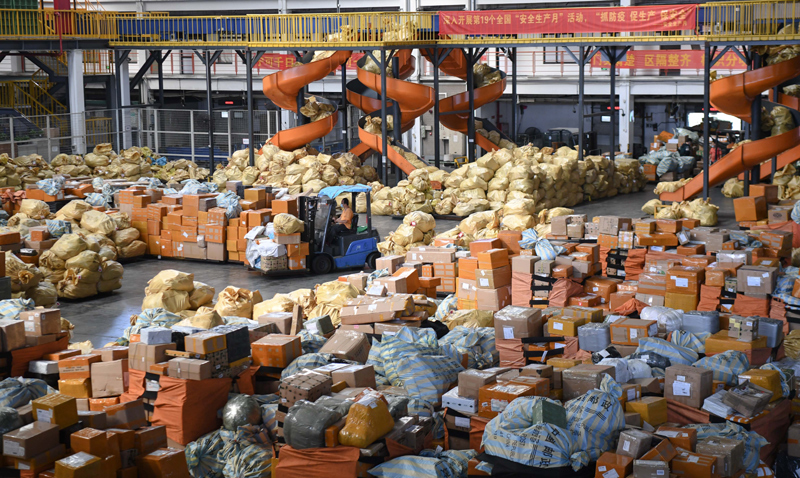
Workers
were handling packages at China Post's Guangzhou air mail
processing center on November 10 (Photo taken by Deng Hua, a reporter
of Xinhua News Agency)
According
to an official from the Department of International Trade and
Economic Relations, Ministry of Commerce (MOFCOM), RCEP
deepens regional industrial and value chains by harmonizing the rules
of origin with regional-content rules; it promotes emerging types of cross-border logistics by facilitating
customs with new technologies; it enhances transparency of investment
policies by adopting the negative list approach to advance investment
liberalization. All of these efforts would optimize and harmonize
regional trade and economic rules.
"High quality" is a prominent feature of RCEP. For merchandize trade, over 90% of goods will eventually enjoy zero tariff. Services trade and investment are much more open than the "10+1" FTAs. In addition, RCEP also includes a number of modern topics such as high-level intellectual property, e-commerce, competition policies and government procurement.
According
to Ruan Zongze, enterprises in the region are likely to enjoy more
preferential policies in a more convenient manner, and people in
regional countries will be able to buy imported products at a much
lower price, better meeting their aspiration for a good life.

The upper photo shows the Amore store in the Amorepacific's headquarters in Yongsan District, Seoul, ROK on October 27 (Photo taken by Wang Jingqiang, reporter of Xinhua News Agency) The lower photo shows a visitor trying skin care product at Amorepacific's booth in the consumer goods section during the 3rd China International Import Expo (CIIE) on November 8 (Photo taken by Zhang Yuwei, reporter of Xinhua News Agency)
In the first three quarters of this year, ASEAN historically became China's largest trading partner. Besides, China's total trade volume with other RCEP members amounted to 1,055 billion, taking up about 1/3 of China's total foreign trade. The large volume of trade, combined with reduced tariffs, will generate significant "trade creation" effect.
It's
worth noting that the signing of RCEP has forged new free trade
partnerships between China and Japan, Japan and ROK, two pairs that
didn't ink free trade agreement in the past. In this sense, the
signing of RCEP further enhances free trade in the region.
RCEP will help advance the China-Japan-ROK economic integration to a higher level and lay the foundation for reaching the free trade agreement among the three countries, said Wang Shouwen.
Taking account of different national actualities, RCEP accords the least developed countries the special and differential treatment and addresses the real needs of both developing and least developed countries by stipulation of stronger economic and technological cooperation. It is fair to say that RCEP accommodates the needs of all parties to the greatest extent. It will drive forward inclusive and balanced development of the region and deliver shared benefits to all.

A visitor is walking out of JETRO's booth at the food and agricultural products section during the 3rd CIIE on November 10. (Photo taken by Chen Yehua, reporter of Xinhua News Agency)
An important platform for China to advance opening-up to a higher level
Accelerating
the implementation of the free trade zone strategy is an important
part of China's new round of opening up.
The
14th Five-year Plan specifically proposes to build a globally oriented
network of high-standard free trade zones, and Chinese President Xi
Jinping announced at the 3rd CIIE that "China stands ready to conclude high-standard free trade
agreements with more countries in the world. We will work for the
early signing of the Regional Comprehensive Economic Partnership…"
According to analysts, the establishment of the RCEP free trade zone will provide a strong boost to China's efforts in making institutional innovations to support an open economy in the new era and fostering a new development paradigm with domestic circulation as the mainstay and domestic and international circulations reinforcing each other.
RCEP
is a vital institutional cooperation platform for fostering a new,
dual-cycle development paradigm. Under this framework, China can
allocate resources and factors of production more efficiently and
drive high-quality development, transformation and upgrade of the
economy, said Zhang Jianping, Director General of the Center for
Regional Economic Cooperation under Chinese Academy of International
Trade and Economic Cooperation.
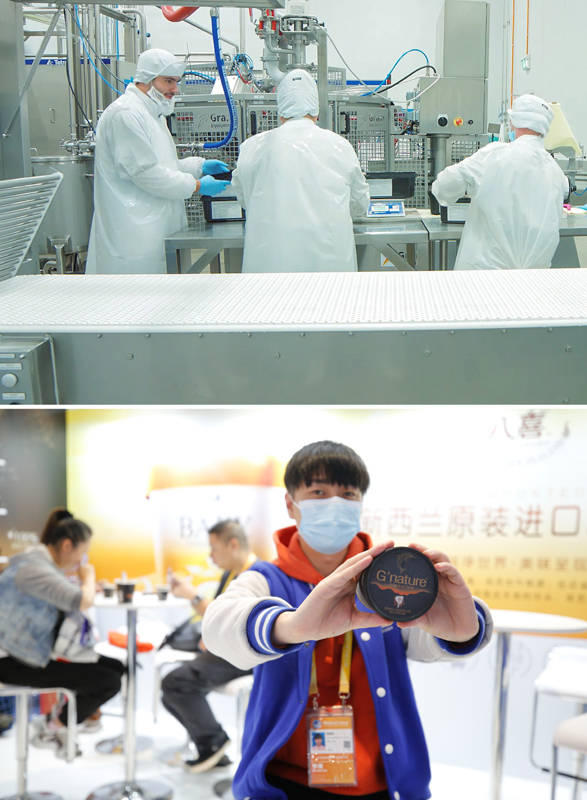
The upper photo shows workers at an ice cream production line in a Baxi plant in New Zealand (File photo by Xinhua News Agency) The lower photo shows a staff member holding an ice cream imported from New Zealand at the G'nature booth during the 3rd CIIE on November 7. (Photo taken by Zhang Yuwei, reporter of Xinhua News Agency)
Two
sets of numbers can best attest to the significance of RCEP:
RCEP
is the 19th free trade agreement China has signed, bringing the
country's free trade partners to 26.
RCEP
establishes the free trade relationship between China and Japan, the
first time that China has inked a free trade agreement with the
world's top 10 economies. With new business ties, China's trade
coverage with free trade partners is poised to climb from the
current 27% to 35 %.
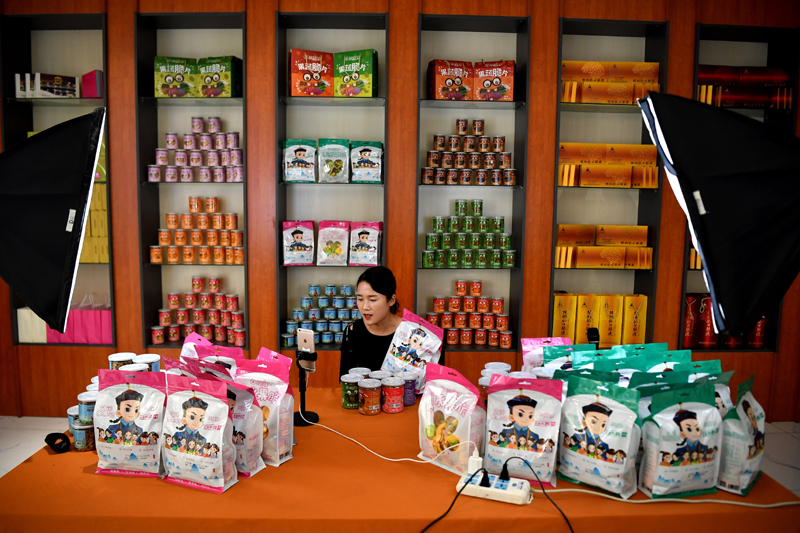
A livestreamer is promoting goods online at a food company in Danfeng County, Shangluo, Shaanxi Province. (Photo taken on July 20 by Liu Xiao, reporter of Xinhua News Agency)
The
signing of RCEP will enable China to build a more comprehensive,
in-depth, and diversified opening-up pattern, further refine its
foreign trade and investment structure, keep
bringing domestic rules in line with high-standard international
trade and investment rules,
and support
an open economy of higher standards,
said Bai Ming, Deputy Director of the International Market Research
Institute at the Chinese Academy of International Trade and Economic
Cooperation, a
think tank under the Ministry of Commerce.
It
will be some time before RCEP finally takes effect. According to
rules, the deal must be ratified by at least six ASEAN countries and
three non-ASEAN signatory countries before it can come into effect.
According
to Wang Shouwen, the RCEP members will respectively go through their
domestic legal procedures to have the agreement come into force as
early as possible. The countries have accelerated the domestic
procedures, and China will make joint efforts with them to make sure
RCEP will benefit the enterprises and people in the region at an
early date.
The
signing of the agreement is just a starting point. RCEP has provided
the region with a platform, on which all parties can further their
cooperation and realize trade and investment liberalization and
facilitation on a higher level, said Wang Shouwen.
(Reporters: Wang Zhuolun, Yu Jiaxin, and Zheng Mingda)


